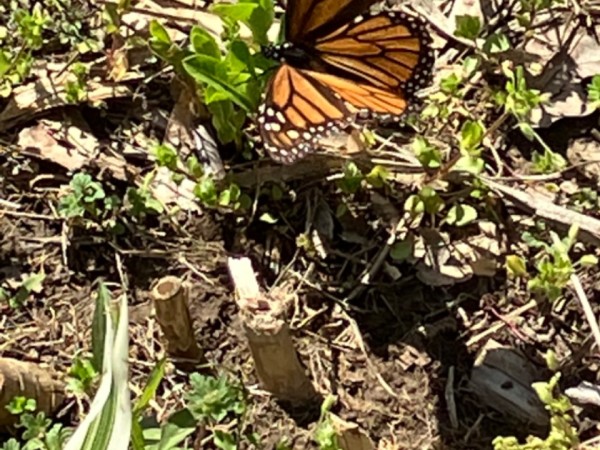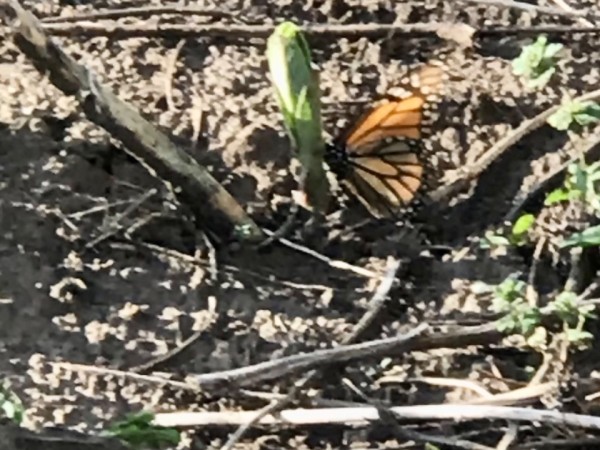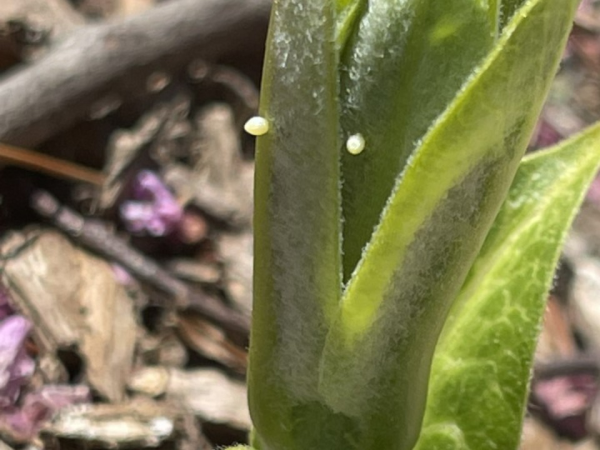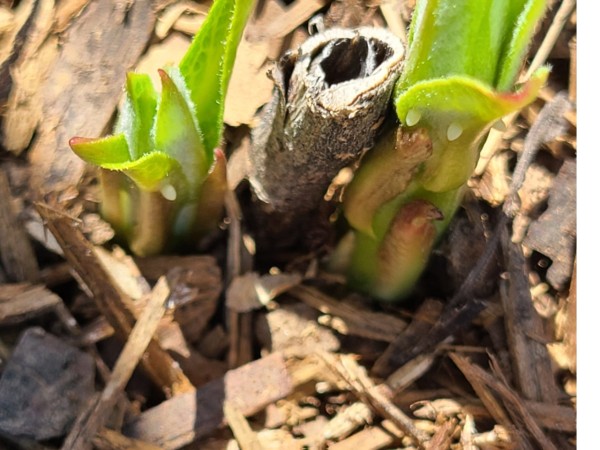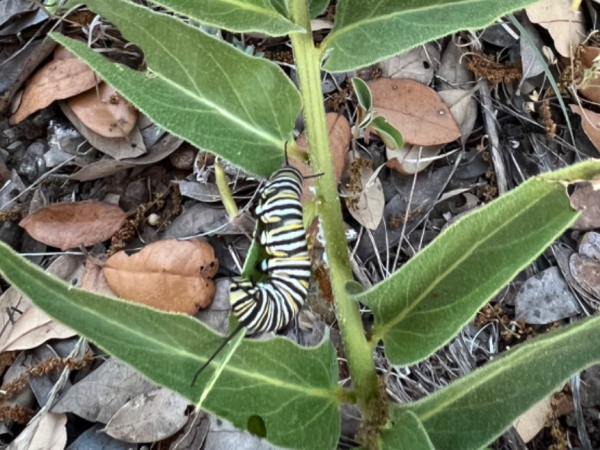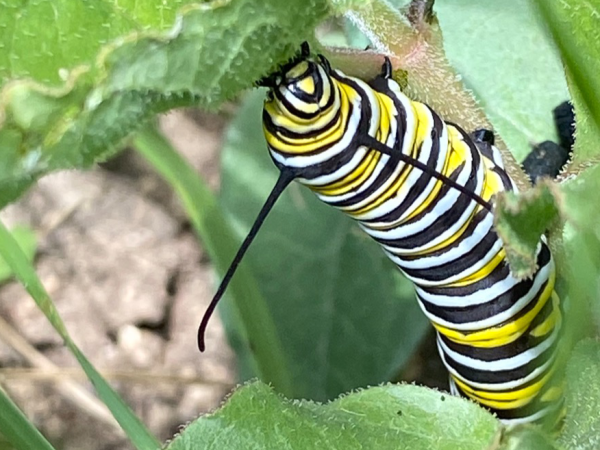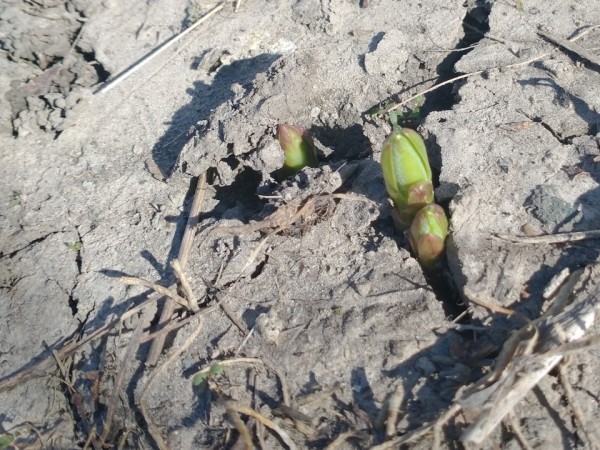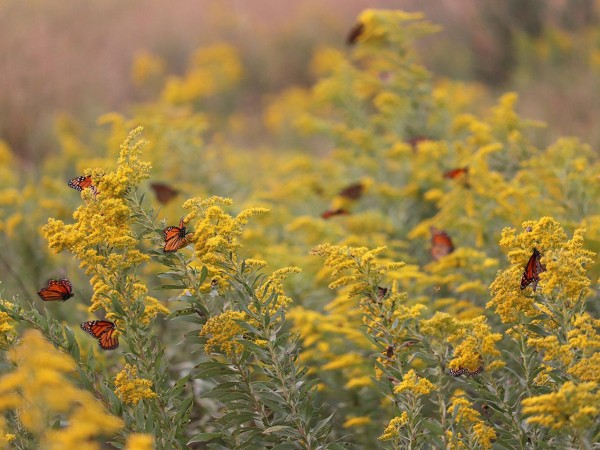Monarch Observation Pace Slows
Chuck in Driftwood, TX (04/16/2023)
As monarchs from overwintering colonies fade away, we await the next generation and surge in observations. Please continue submitting reports for the North American population nearest you, either the eastern or the western population. The data from our Journey North community's observational reports contribute to a deeper understanding of the migration, as well as to conservation and protection efforts for the species. Thank you in advance for sharing your observations.
Eastern Monarch Population
Migrating Monarchs
Migration can be a stop-and-go journey with wind and weather in control. In the Midwest and Great Plains, the leading edge of migration is hovering around latitude 38 - 39°N, with a few observations being reported in central Wisconsin and Michigan, likely due to weather fronts and strong winds carrying the monarchs farther north. Farther east in the mid-Atlantic region, the leading edge is hovering at nearly the same latitudes, around 37 - 39°N. Check out the monarch migration map to compare the migration frontline from week-to-week.
Karen in Pacific, MO: “I had to chase this “first of the season” beauty around the yard and garden. She seemed too restless on this sunny 80degree day to stay for a selfie! But, alas, she landed on a milkweed sprout and laid eggs. Fly proud!” (04/14/2023)
Jo in New Cambria, KS: “Sighted at4:30pm central time. She visited several very small common milkweeds” (04/17/2023)
Milkweed, Eggs, and Larvae
After mating, female monarchs can lay eggs throughout their lifetime. Each butterfly lays hundreds of eggs. Since she dedicates her energies to egg-laying, the female only lives a few weeks during this stage of her life. Explore our maps of egg reports to see where the next generation are being laid.
Tad in Chesterfield, MO: “Approximately 6 eggs were spotted on a small group of common milkweed sprouts. A faded female monarch was observed laying the eggs, she was the first monarch we have seen this year.” (04/12/2023)
Linda in Versailles, KY: “First monarch sighted today. She spent hours laying eggs on common milkweed sprouts.” (04/15/2023)
The leading edge of larvae reports are mostly coming in from the southern and central US, near latitude 35 - 36°N.
Sara in Glen Rose, TX: “Found 11 healthy larvae today including second, third, fourth, and fifth instars. Milkweed is plentiful.” (04/16/2023)
Mobi in San Antonio, TX: “In the yard of a corner lot in my neighborhood, there are at least 20 Zizotes milkweed plants (all volunteers) growing. Today I found 4 fifth instars and 3 third instars spread out, each on a different plant. (There was also 1 egg on a leaf.)” (04/17/2023)
Milkweed emergence is increasing as spring progresses. Warmer temperatures in the northern regions meant earlier-than-usual emergence for some observers, followed by a cold front moving through this week.
Dan in Midland, MI: "An abnormally warm, summerlike week brought out the first shoots of Asclepias exultata. Very early compared to last year." (04/16/2023)
Robert in North Tonawanda, NY: "Milkweed pushing up through concrete-like ground after three 80 days." (04/16/2023)
Western Monarch Population
Out west, reporting has slowed, with the cause to be determined. Gail Morris made a call for sightings a few weeks ago, and we are making that call again!
Gail wrote, “Now that monarchs are on their way en route to the breeding grounds, your reports are critical to our understanding of their migration. Report your sightings of emerging milkweeds and monarchs in any life stage! Provide as much information as you can such as weather conditions (it’s okay to estimate). Your detailed description of what you see can include, but is not limited to, the monarch’s gender and activity and, if known, the type of milkweed, and flowers if they are nectaring. Let us know how monarchs are faring under stressors from winter storms still sweeping through! Be sure to check milkweeds for eggs, larvae or pupae if you are lucky to find them.”
April is Citizen Science Month
Citizen Science Month is a month-long celebration of citizen science as a movement—a movement that encourages all to observe our natural world with intention and to share what we see, touch, smell, and hear with others. Participate this month, and all year long, by reporting to Journey North. Remember to submit your photographs, too!




